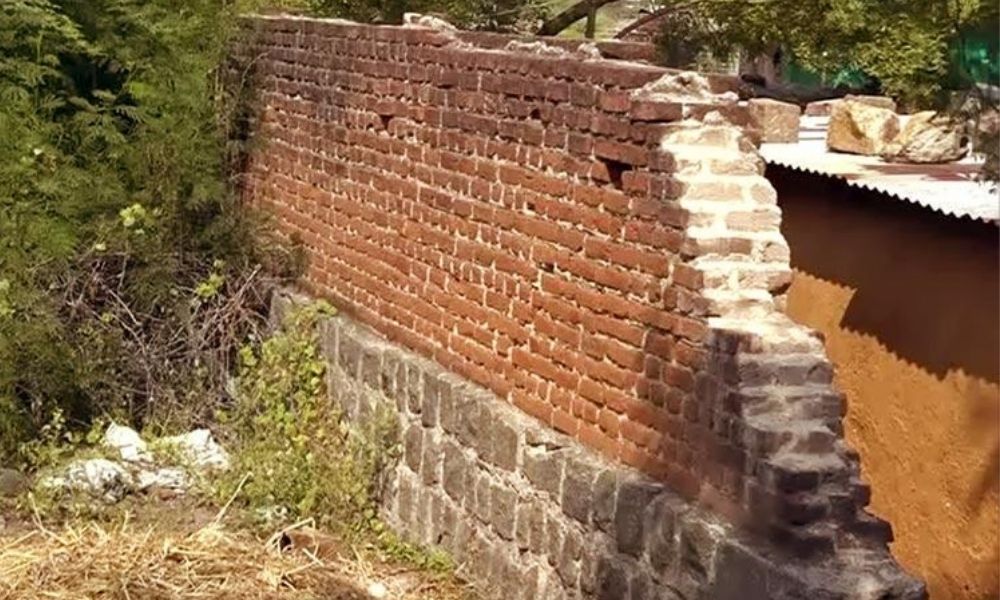
credit: The News Minute (Representational Image)
Authorities In Coimbatore Demolish 'Caste Walls', Incident Serves Reminder For Age-Old Prejudices In TN
Writer: Nishit Navin
I have lived in 7 cities across India. I completed my graduation with a triple major in English, Journalism, and animation. Currently, I am doing my master's in journalism from SIMC, Pune.
Tamil Nadu, 4 Aug 2021 4:50 AM GMT | Updated 4 Aug 2021 5:44 AM GMT
Editor : Sanal M Sudevan |
Keen to explore new things and learn something new every day in the field of jounalism.
Creatives : Sanal M Sudevan
Keen to explore new things and learn something new every day in the field of jounalism.
The wall built a gated community that forced the members of SC communities to take a detour from the main road. In 2019, a similar structure collapsed in Tamil Nadu's Mettupalayam which killed 17 people. These are not isolated incidents as Tamil Nadu has a history of such structures that divide along caste lines.
Historical injustices related to caste-based discrimination are still a prevalent social evil in Tamil Nadu. One of the biggest challenges of Modern Independent India has been to demolish the Caste divide in the country that intensified due to years of historical indiscrimination. But rather than bridging the gap, some parts of Tamil Nadu still witness medieval castle practice of isolating the Dalit community by erecting 'Caste walls.'
The district administration of Coimbatore demolished a 10 feet wall which created a gated community that blocked the entry of members from Schedule Caste into the society. The families from the Arunthathiyar community at Pannimadai wrote a petition that the wall blocked them from using the paths which were earlier accessible.
The erected wall affected 120 families of Kondasamy Nagar, who were forced to take a longer route from Pannimadai Main Road to reach their homes. According to The Indian Express, the construction was a caste wall, and even after several complaints to the gram panchayat, no action was taken.
On Saturday, members of the Thanthai Periyar Dravidar Kazhagam (TPDK) sought help from the Coimbatore district revenue officer PS Leela Alex after which the wall was demolished. But more than a story of Dalit liberation, this demolition serves as a stark reminder of the deplorable practice of erecting walls to isolate the marginalised castes from the social mainstream.
Caste Wall Crushed 17 To Death in 2019
Tamil Nadu has had a long history of such constructions. Protests were carried out after a wall that was meant to keep Dalits away collapsed due to heavy rain killing 17 people. The owner of the house who built the wall was arrested, and a compensation of Rs 4 Lakhs was announced for the families of the deceased. The Dalit community of the region alleged that several requests to demolish the wall were made, but the authorities paid no heed to the matter.
Less than a year after the incident, the reconstruction of the wall began. This time, the owner was able to receive permission from Mettupalayam municipality.
A Historical Phenomenon
A recent report by India Today said that a nine-foot-high 'untouchability wall' had been built in Rajiv Gandhi Nagar in Trichy district to separate the colonies of Dalits from farms owned by Upper Caste members. The practice of creating walls of division is not a recent phenomenon. According to News Minute, a wall in Tamil Nadu's Uthapuram was built 30 years ago by the OBC Pillaimar community. The wall was constructed to prohibit the entry of the Devandra Kula Vellalar community into the Mariamman temple.
The tension between the community grew in 2007 when the wall was electrified to prevent Dalits from climbing into Hindu areas. When the parts of the wall were finally demolished in 2008, media reports celebrated it as a momentous day in the liberation struggle of Tamil Nadu Dalits. Despite the celebrations, only a section was taken down as large parts of the wall still stand intact.
For a country that boasts of becoming a superpower in the near future, the idea that such walled communities could exist in broad daylight is unimaginable. The debate over the prevalence of caste discrimination in modern India is part of the mainstream discourse. But, practices like these are a reminder that India still has a long way to go to achieve a just society for the marginalised.
Also Read: UN Establishes Permanent Body To Address Challenges of Racism
 All section
All section













